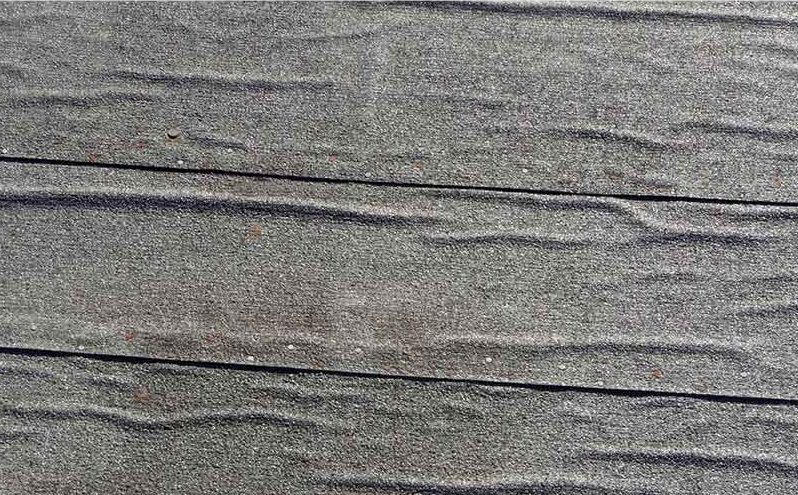
Flat roofs offer numerous advantages. They’re cost-effective, fluently accessible, fairly easy to install, and indeed energy effective in some cases. They also give an ideal position for varied structure elements such as HVAC units, solar panels, and communication equipment. Still, flat roofs aren’t indestructible with age, lack of conservation, and a battering from the rudiments all playing a part in creating issues for unknowing homeowners, creating a rather stressful experience. Luckily, if you spot these signs beforehand, you can preclude damage from occurring to your property and ask a trusted roofing company with excellent expertise to repair the roof. Below we’ll take a closer look at the most frequent flat roof problems and their solutions.
Equated to pitched roofs, flat roofs don't drain well, and as such, they generally develop ponding water which is defined as water that stands in a puddle on a roof for 48 hours or further. The aftereffect only develops if the water remains there for some time because it can commence to draw on pressure on the membrane and begin wearing it down. Likewise, the ponding water can result in leaking due to the pressure on the membrane getting too great, and allowing humidity into the roof structure.
How to fix ponding water
The best way to battle ponding water is to be proactive and keep the roof well-maintained. It’s significant to ensure your gutters and drains are maintained, and any blockages are unblocked as quickly as possible to obviate ponding water. also, ensuring the person installing your roof is educated and professional can help to remove any prospect for ponding water. Placing patches over a slight ponding area can be a simple and prompt fix to preclude further build-up of water. Dry the water out using rags or handkerchiefs and leave it to dry. Cut a 12-inch round of rolled asphalt, circulate roofing cement to the underside of the patch, and place it onto the ponding area. also cut further circles out, each time adding the circle size by four inches until you hold 10 circles. Each time place the patch on top of the former one, using roofing cement. When intact, apply a chunky rubber or elastomeric coating to seal, and once dry test it by adding water on top of it. If it's a large area of pooling, it may be the case that the entire roof membrane needs to be replaced If there are multiple pools of water.
Alligatoring is the term used to portray the snapping of a coating or arising bitumen on a flat roof, which causes a pattern analogous to the skin of an alligator. This can be caused due to water, residue, or long-term vulnerability to the sun. The cracking will ultimately split and develop farther if left not repaired, meaning that water can get into the roofing and beget leaking, humidity, and further damage.
How to fix alligatoring
To fix alligatoring, one solution is to apply a substitute coating to the roof. First, clean the roof completely, taking off all dust, dirt, and anything otherwise that's loose. also apply a primer, and once the primer has seared apply the coating.
Temperature changes can beget the roofing material to dilate and contract, which is fairly normal. Still, you must keep an eye on your roof for substantiation of this, as continuous expansion and compression can devitalize the roof and potentially create leaks. This thermal movement can also occur on the flashing, resulting in it pulling down from the edges of your roof over time this leaves room for leakage and humidity entranceway into your roof.
How to fix thermal movement
Insure you use sound quality flashing and roofing accouterments, and that they're installed duly, with regular maintenance. However, it’s best to substitute the flashing, If you notice some flashing pulling down from the edges of the roof or house.
Blistering occurs on your flat roof when slight pockets of air or humidity get entrapped beneath the membrane or in between layers of the membrane. This worsens when the sunlight warms the roof up, which causes the pockets of air or humidity to expand, magnifying the membrane.
How to fix blistering
Typically, as long as they stay intact you don’t need to worry too much about the blistering. Keep a dense eye on them, and if they pop you can also replace or repair them. To repair blisters, cut away the blistered substance up to the point that it's attached tightly to the roof still. also reapply the new membrane material, lengthening it at least six elevations over the edge of the blister to preclude leakage. It’s significant to keep your roof well preserved and cleaned regularly any form-up of moss or algae can contribute to trapped humidity or water that may beget blistering.
Water access is a familiar problem, generally caused when flat roofing hasn’t been installed or conserved properly. However, this can beget aftermaths within your home, including dampness, if left without repairs.
How to fix leaks
The solution lies in relating the source of the leak so that the right portion of the flat roof can be repaired. occasionally, this can be due to compromised flashing which seals the edge of the roof to the brickwork of the plot, but you can ask a professional to carry out repairs on this for you. Those with flat roofs need to ensure that they're regularly conserving the roof. It's significant to ensure that checks take place on a frequent base. You must also ensure that it's kept pristine as debris is more probable to gather on flat roofs, resulting in blockages and drainage issues.
Flat roofing comes with its vantages and it also comes with some troubles. Fortunately, these can be overpowered when reaching out to an expert roofer at 1274 5th Ave New York, NY 10029 (212) 457 1324 https://bestroofingnyc.com